The word xylitol causes me to conjure up images of a chemically laden substance. But, xylitol makers have slapped the word “natural” all over bags of xylitol that you find sitting on store shelves. And indeed, it is classified as a natural sweetener.
Is xylitol really natural? Or is it just another wolf is sheep’s clothing like high fructose corn syrup?
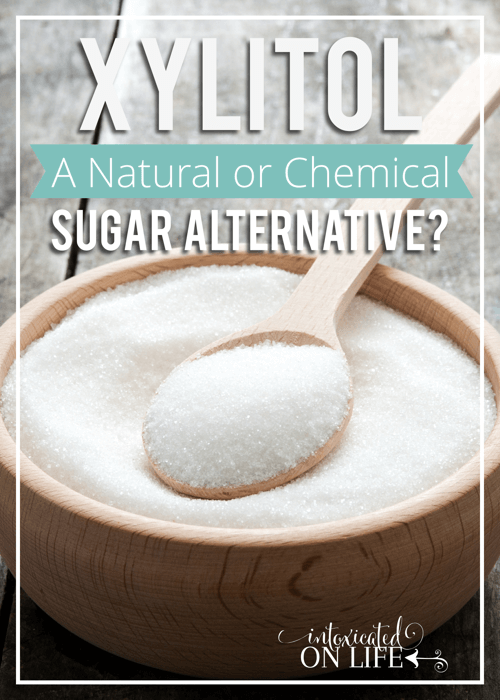
What is Xylitol?
Xylitol was discovered late in the 1890’s. It wasn’t until the 1930’s that xylitol was synthesized into a pure form, much like what we use today. It was used as a sugar replacement during World War II in some countries when sugar shortages occurred.
Today, you find it on health food store shelves and also added to a number of products including chewing gum, mouthwash, floride treatments, toothpaste, and also in some pharmaceuticals.
Xylitol is in a class of substances called “polyols,” more commonly known as sugar alcohols. Sugar alcohols are neither sugar nor alcohol, but have a chemical structure that has similarities of both sugar and alcohol (I won’t bore you with anymore chemistry). There are a number of other sugar alcohols including maltitol, erythritol, mannitol, and sorbitol, amongst others.
Fibers of fruits and vegetables naturally contain xylitol. It can be extracted from various berries, oats, murshroms, corn husks, sugar cane, and birch trees. This fermented sweetener is made from whole plant pulp, but must undergo an extensive treatment and processing to become the sugar like crystals you find sitting on the shelf at health food stores.
It’s hotly debated whether this sweet substance resembling sugar should actually be called a “natural” sweetener.
Benefits of Xylitol
This sweetener with a strange name actually has a number of well established benefits.
Dental Health
It’s been documented since the 1970’s that xylitol, when used regularly, can help to prevent tooth decay. The research on xylitol for dental health did not stop in the 1970’s. A quick survey of the literature reveals a veritable cornucopia of peer reviewed journals indicating the dental benefits associated with xylitol. Xylitol not only prevents bacterial growth, but also helps to remineralize teeth that already have begun to decay. 1, 2, 3, 4, 5
 Osteoporosis
Osteoporosis
For this reason, scientists speculate that xylitol may help to prevent and treat osteoporosis. There are a number of articles demonstrating these effects in rats, but I did not come across any studies using humans at this point. 6, 7, 8
Ear Infections
There have been numerous studies that support decreased ear infections with the use of xylitol. This is probably due to xylitol’s anti-bacterial properties. 9, 10
Yeast & Bacteria in the Gut
Xylitol is a prebiotic; that is, it encourages good gut flora (helpful microorganisms that live in your digestive tract). Sugar on the other hand encourages the growth of unhealthy bacteria and yeast in the gut. Xylitol is a fantastic option for those who deal with chronic yeast infections such as candida. Unlike some artificial sweeteners (like splenda and aspartame) xylitol does not encourage the growth of yeast in the gut.11
Blood Glucose & Insulin
Xylitol is absorbed more slowly than sugar, in fact it’s not even completely broken down in our system. As such, it does not cause a rapid spike in blood glucose. Xylitol is typically a wonderful substitute for diabetics as it has little effect on glucose and none on insulin.12
Infection
Some scientists have indicated that xylitol increases WBC (specifically netrophil’s). These are cells that help us fight off infection.13
Downsides to Xylitol?
With all of those potential positives to be gained from use of xylitol, you might wonder: What’s not to like?
For one, as mentioned previously, xylitol is a processed food. We are not eating xylitol in it’s natural whole food form. This has caused much debate regarding the healthfulness of xylitol. Some argue that xylitol, as a processed food, cannot be part of a healthy diet. Others, argue that because of the many benefits, it is a perfect sugar substitute.
Xylitol can also have the propensity to cause gastrointestinal problems in some individuals. Because xylitol is not fully broken down in your system it can have a laxative effect. Other reported discomforts include bloating, gas, and abdominal pain and cramping.
Adaptation can occur in individuals who are particularly sensitive to xylitol if it is introduced very slowly into the diet. Despite the abdominal discomfort and gastrointestinal distress that occur in some individuals, there are no known serious side effects from consuming xylitol.
Many companies that market xylitol produce their xylitol from genetically modified corn. Though there are several out there that sell non-GMO xylitol, it’s important to do your investigative work prior to investing in a GMO derived product.
Finally, it is important to note that xylitol is dangerous to dogs. It can be toxic and can cause dangerously low blood sugar if your sweet poochy gets ahold of it.
Nutrition & Effects on Blood Sugar
Xylitol has the same approximate sweetness as table sugar, but with 1/3 less calories. 1 gram of xlitol has just 2.4 calories to sugar’s 3.87 calories. Xylitol has the same amount of carbohydrates per serving as sugar, but remember because xylitol is not broken down and metabolized well in our systems it has very little effect on blood glucose and insulin levels. Because of this xylitol is on a 7-13 (depending on the source) on the glycemic index.
Most individuals do not have problems with their blood sugar when using xylitol. However, there are exceptions. If you peruse the Internet you can read comments from people that say it causes a rise in their blood glucose levels—not good. If you’re on a very low carb, ketogenic diet, it may also cause problems: some claim that it knocks them out of ketosis. I have checked my blood glucose after using xylitol and ketones and it does not seem to have any negative impacts on me, but your mileage might vary.
Moral of the story: always test things out on yourself to see how you’ll respond!
How to Substitute Xylitol for Sugar
Because xylitol has approximately the same sweetness as sugar it makes it quite easy to substitute in existing recipes. Here are a few things you might want to keep in mind if you decide to try out xylitol:
The same action that prevents yeast and bacteria from proliferating in the presence of xylitol prevents xylitol from working in yeast-based breads. If you’re making a yeast bread, you’ll have to use good ole’ fashioned sugar.
- Be sure to grind xylitol if a recipe does not have a significant amount of moisture or your final product will be gritty. A food processor, magic bullet, or coffee grinder all work wonderfully for this.
- Xylitol absorbs more moisture than sugar, so you may need to increase liquid content.
- Cooling is sometimes present when using xylitol. By cooling, I mean a menthol-type effect. The sensation you get with a strong mint. This can be decreased or eliminated by cutting down on the xylitol and using other sweeteners.
- If you would like to use xylitol as a brown sugar replacement, add 2 teaspoons of molasses per 1 cup of xylitol.
- Xylitol acts as a preservative and increases the shelf life of baked goods (bonus!).
- Xylitol will not caramelize or brown your baked goods the way sugar will.
How I Use Xylitol
Though xylitol definitely stretches the definition of “natural,” for me, the good outweighs the bad when it comes to xylitol. The major vice of xylitol, abdominal distress, appears to happen primarily in individuals that lack good gut health (which is, unfortunately, quite a large number of people). The literature suggests that most people, when xylitol is introduced into their diet gradually are able to tolerate xylitol quite well and are able take advantage of it’s benefits.
I have used xylitol quite extensively and neither I nor anyone else in my family have experienced the aforementioned abdominal discomfort. I do try to decrease the amount of xylitol I use when baking by combining it with pure stevia extract.
If you are looking to introduce xylitol into your diet I would recommend starting out with a little and working your way up. If you happen to be one of the unfortunate souls who does not tolerate this particular sugar alcohol well, it wouldn’t be a pretty site to load up your system with it.
. . . .
Other Posts in This Sweetener Series:
- A Sweet Life: A blog series about sugar and sugar substitutes
- A Sweet Life: Sugar and Its (Lack of) Health Benefits
- A Sweet Life: Benefits of Honey (and some drawbacks)
- A Sweet Life: Health Effects of Splenda
- A Sweet Life: Stevia – A Natural Sugar Alternative
- A Sweet Life: The High Fructose Corn Syrup Controversy
- A Sweet Life: Is Agave Nectar a Healthy Sugar Alternative?
Sources:
- Remineralization effects of xylitol on demineralized enamel
- Xylitol and caries prevention — is it a magic bullet?
- The use of sorbitol- and xylitol-sweetened chewing gum in caries control.
- Xylitol pediatric topical oral syrup to prevent dental caries: a double-blind randomized clinical trial of efficacy.
- Xylitol-associated remineralization of caries lesions
- Effect of Xylitol on Bone Histomorphology of Diabetic Rats
- Effects of xylitol on the femur and mandibular bone in ovariectomized rats
- Dietary xylitol protects against the imbalance in bone metabolism during the early phase of collagen type II–induced arthritis in dark agouti rats
- A novel use of xylitol sugar in preventing acute otitis media.
- The osmolyte xylitol reduces the salt concentration of airway surface liquid and may enhance bacterial killing
- The influence of dietary carbohydrates on in vitro adherence of four Candida species to human buccal epithelial cells
- The effects of xylitol on the secretion of insulin and gastric inhibitory polypeptide in man and rats
- Xylitol-supplemented nutrition enhances bacterial killing and prolongs survival of rats in experimental pneumococcal sepsis

 Osteoporosis
Osteoporosis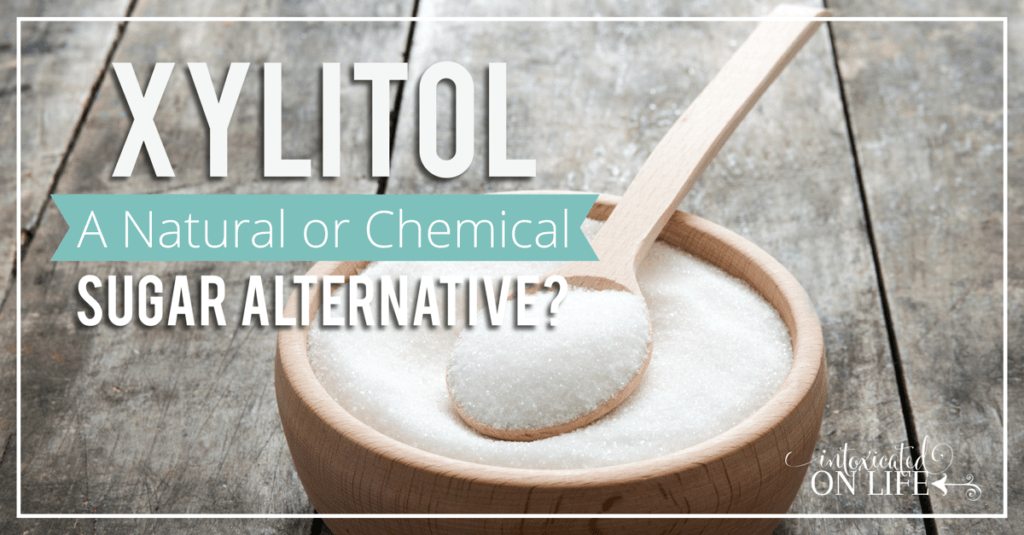
 The same action that prevents yeast and bacteria from proliferating in the presence of xylitol prevents xylitol from working in yeast-based breads. If you’re making a yeast bread, you’ll have to use good ole’ fashioned sugar.
The same action that prevents yeast and bacteria from proliferating in the presence of xylitol prevents xylitol from working in yeast-based breads. If you’re making a yeast bread, you’ll have to use good ole’ fashioned sugar.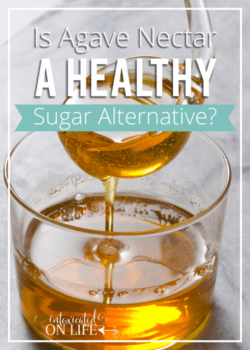
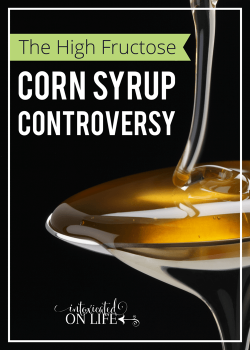
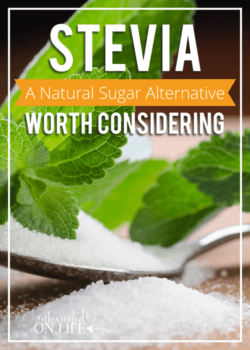




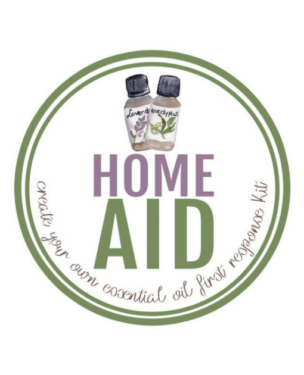

So much to learn about sugar and its substitutes…thanks for informing me about xylitol. I feel like I understand it a little better now! 🙂
This is great. I only chew gum that is sweetened with Xylitol. My kids call it “healthy gum!” 🙂
I guess that’s why it’s always in toothpaste! The dental bennies. I have a lot of GI issues & it really adds to them, so I don’t use it personally. But I’m glad I read this – I didn’t realize a LOT of the info you wrote about!
Thanks for the insightful post! So much I didn’t know…
Marianne
Sandling All Day
I’d always stayed away from xylitol because, as you said in the beginning, it just seemed unnatural. Thank you for all your research – I feel like I can make a much better decision about it now! 🙂
Food for thought: The Medical industry and Dental Industry also think it was safe to put amalgam (mercury) in your mouth and floride in your water. Just because they endorse it, doesn’t necessarily mean it is good for you!
You’re right! That’s why it’s important to do your own research and not just take the american dental association’s word for it. I’m actually not sure if they endorse the use of xylitol or not. It does seem like a very good alternative to sugar from my research. I’m also encouraged to read about many holistic and biologic dentists using this in their practice to help prevent cavities in their patients.
If you ever look at how cane sugar is made, it is very questionable if you can call it natural. Same with beet sugar. If you get down to it, honey is likely the only real natural sugar, with maple syrup making a second. It’s just tree sap boiled down.
Stivia, now matter what they mix it with, always tastes bitter to me. I have thrown out too many things trying to use it.
Xylitol is a sugar alcohol, not a prebiotic. See: http://www.ncbi.nlm.nih.gov/pubmed/26723007. It is also sometimes referred as “birch sugar.”
It is, in fact, both. I address that throughout the post.
Interesting article. Thank-you for this. I’m curious to know a little more about how you use xyletol with stevia. For instance, I’m baking today with a recipe calling for 2 cups of sugar. How should I substitute? I’d appreciate your opinion. Thanks.
Hi Charmaine,
Typically I would do approx 3/4 cup of xylitol and 1/4 teaspoon of pure stevia extract. That said, stevia can be different from one brand to another and if you’re not using a PURE extract, you’ll need more. I’d start with a little less than what I said and do a little taste test. You want it to taste a little sweeter before it’s baked than you want the actual product to turn out. These substitutions are not an exact science, unfortunately.
Hello. I was just wondering how much xylitol would you use in a toothpaste application? I have made some with bentonite clay, baking soda coconut oil and peppermint E.O. There is about 3/4 -1 cup of it, and since I can’t stand the taste of baking soda, and xylitol is supposed to be so good for your teeth, I thought I’d add some. I should also grind it, as your article suggests?
Thank you!
Hi Carol,
I’m not sure of the recipe you’re using for toothpaste, but I’d probably start with 2 Tablespoons of xylitol and see how it tastes. You can always add more. I’d probably put a few drops of essential oils in there too to help with the taste. Since you’re not swallowing the toothpaste, that shouldn’t be a problem. And yes, I’d grind the xylitol to a powder. Good luck! 🙂
Hi:
I would like to get clarification on the remark that xylitol is a ” Prebiotic”, is it a Prebiotic like Soluble fiber in Oats or beans???. You mentioned it “feeds” the good bacteria, which would be the Bacteriodetes or Provetella which would be fermented to butyrate which will become the fuel for colon cells, so HOW COME their is SO much negative information about the hazard health benefit of xylitol as cause of gut dysbiosis like diahrrhea, disrupt the gut lining (enterocysts), leaky gut, causing autoimmune,
the undigestabilty sylitol,(as with soluble fiber, which is suppose to be the POSITIVE QUALITY) of the sugar alcohol causes Passive osmosis of water to the colon. which causes “Rot” and bad bacteria begins to grow, all this stuff is from the “The Healthy Home Economist”. All this NEGATIVE, information as to xylitol begins “toxic and damaging” is not likE PREBIOTIC “soluble fiber” (polysaccharide, Beta glucan) like in oats or guar gum in beans……can you please CLARITY???
Yes, xylitol is a prebiotic. It’s naturally found in some fruits and vegetables. Here is a journal article you might be interested in regarding xylitol as a prebiotic. Xylitol an Emerging Prebiotic from the International journal of Applied Pharmaceutical and Biological Research
There are some individuals that can’t tolerate some of those raw fruits and vegetable. If you think about it, many prebiotics often initially cause gas and other intestinal problems particularly when the bowl pH is abnormal. This is one of the symptoms that probiotics are necessary. And it’s also one of the reasons you’ll read repeatedly that someone who begins using xylitol should start with just a little bit while they see how their system responds to it. There is quite a bit of research out there on this and it could be a very lengthy post to explain it all. But I do hope some of this info gets you off on the right start in terms of researching xylitol as a prebiotic.
Great article ! Have you or anyone used it in jam or marmalade ? Please
Yes, I made a whole bunch of strawberry freezer jam sweetened with xylitol last year 🙂
Where can I buy this. Every site says it does not ship to the United States.
You can get xylitol at many health food stores or online. Here’s just one brand available on Amazon: https://amzn.to/2MTqZwp